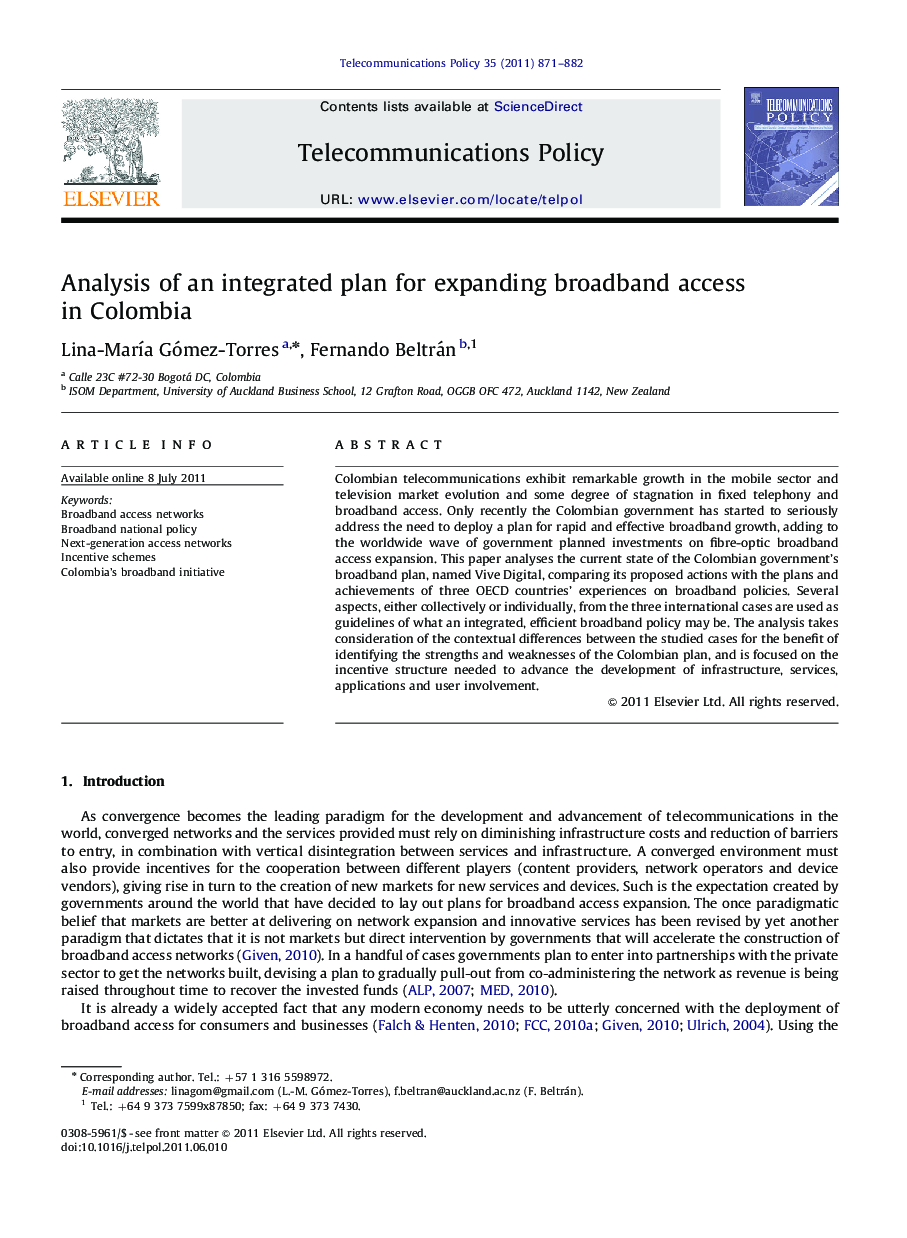| Article ID | Journal | Published Year | Pages | File Type |
|---|---|---|---|---|
| 556651 | Telecommunications Policy | 2011 | 12 Pages |
Colombian telecommunications exhibit remarkable growth in the mobile sector and television market evolution and some degree of stagnation in fixed telephony and broadband access. Only recently the Colombian government has started to seriously address the need to deploy a plan for rapid and effective broadband growth, adding to the worldwide wave of government planned investments on fibre-optic broadband access expansion. This paper analyses the current state of the Colombian government’s broadband plan, named Vive Digital, comparing its proposed actions with the plans and achievements of three OECD countries’ experiences on broadband policies. Several aspects, either collectively or individually, from the three international cases are used as guidelines of what an integrated, efficient broadband policy may be. The analysis takes consideration of the contextual differences between the studied cases for the benefit of identifying the strengths and weaknesses of the Colombian plan, and is focused on the incentive structure needed to advance the development of infrastructure, services, applications and user involvement.
► In late 2010 Colombia’s ICT Ministry launched the national broadband plan. ► The Netherlands, South Korea and New Zealand exemplify national broadband plan. ► Lessons from the three country-cases are used to analyse the Colombian plan. ► Analysis provided the plan with recommendations for a more efficient growth path. ► Incentives are highlighted in broadband development and digital literacy.
